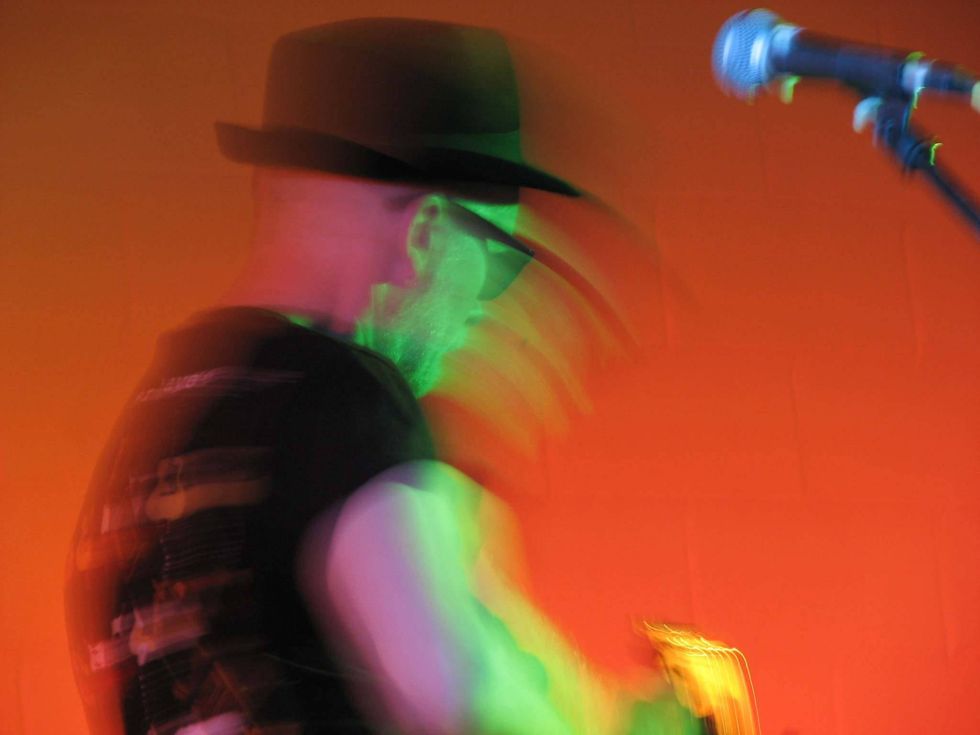It’s never been easier to build an amp of your own. You can find scores of websites with a ton of classic-amp-model options. These kits range from minimal to complete, including cabinet and speaker. Sounds fun, but it can be a bit scary. It takes a fair amount of time and follow-through, plus deep regard for electrical safety. If I had a wire for every time I was shocked, blew up a voltmeter, red-plated a tube, or smoked a resistor … I could string a harp. Follow the instructions! Most of my trials came through freestyling—building without a schematic and sort of winging it. But if you have the interest and patience, building an amp is a very rewarding endeavor.
When I first became interested in guitar-amp electronics in the early ’90s, I wanted to apprentice with my local amp repairman, Rich Bogart. He had a hole-in-the-wall shop in Chapel Hill called The Tube Farm. Repair work was a side interest for Rich, who was an IBM mainframe tech, on call 24/7. Sometimes he went weeks between service calls, so The Tube Farm kept him busy. Rich didn’t go for the apprentice idea, but told me to do what he’d done 25 years earlier: DIY-build the simplest Fender—a tweed Champ. Locate parts, figure out the schematic, assemble, light fuse, and step away!
Rich gave me a copy of the Angela Instruments Catalog, the size of a small-town phone book. It was full of listings for tubes, transformers, vintage radio parts … a ’20s to ’60s tube-tech Rosetta Stone. And it did have a Champ project schematic. Buy our stuff to build this!
But what about you and your amp build? If you’re lucky, unlike me, when you put it all together it will work the first or second time. Modern kits take most of the guesswork out, which is super helpful. Imagine staring at a pasta bowl of wires trying to see the one lead in the wrong place, or find the backwards capacitor. That’s how you receive the extra education that makes the next build easier. For my first build, there were two items that had me flummoxed. One was a schematic symbol I couldn’t figure out, and the other was an issue when I turned on the amp. It would blow the fuse after about 40 seconds every time.
Look at the mysterious symbol highlighted in yellow (Photo 1). It looks like a transformer, but it only has one side and it’s hooked up funny. The appendix of the amp? No. It’s a filter choke. Like our appendix, an amp can live without it. Cheaper models often use a power resistor in place of the expensive half-transformer filter choke. (The ’50s Champ has a resistor.) My Angela Instruments schematic had one of these mysterious extra bits, unidentified, so I had to go back to Rich for guidance.
The filter choke helps smooth ripple or hum in the power supply and is most often found between the main filter cap, which feeds the output transformer/power tubes, and the screen supply filter cap. Let’s back up a little. Tube guitar amps run on DC voltage. The electricity in our house is AC, so outlet voltage swings up and down 60 times a second. You’ve heard of 60-cycle hum? That’s this alternating wall-voltage signal: a low 60 Hz tone infecting the electronics. So, since we need DC for our amps, how do we convert AC to DC?
That’s where rectifiers come in. They can be tube or solid-state. Rectifiers allow current to flow in only one direction. When the AC power from the wall swings up (positive), the rectifier lets current through to fill the amp’s filter caps. When the AC power swings down (negative), the rectifier blocks the negative current flow. I’m oversimplifying—and omitting the power transformer, which takes the wall AC voltage and transforms it to higher or lower AC voltage for the amp—for now.
So, that’s how we get DC for our amp, but the DC is pulsing with the wall-cycle frequency 60 times a second, so that 60 Hz hum is riding along with our new DC flow, modulating the amp’s power supply. Filter caps work to smooth out this hum, and the filter choke—see, I got back to it—is simply another tool to remove the ripple or DC power supply fluctuation. A filter choke has dynamic properties that bounce and can actively assist the filter caps when the amp is drawing current through tubes. A much cheaper resistor can only help reduce the 60 Hz hum, not remove it. (Most amps use full wave rectification, which yields double the current pulsing for a ripple frequency of 120 Hz, but let’s keep it simple for now!)
Stay tuned for next month, where I’ll describe the sound of filter chokes versus resistors, plus tell the story of why my first build almost became a doorstop.




















